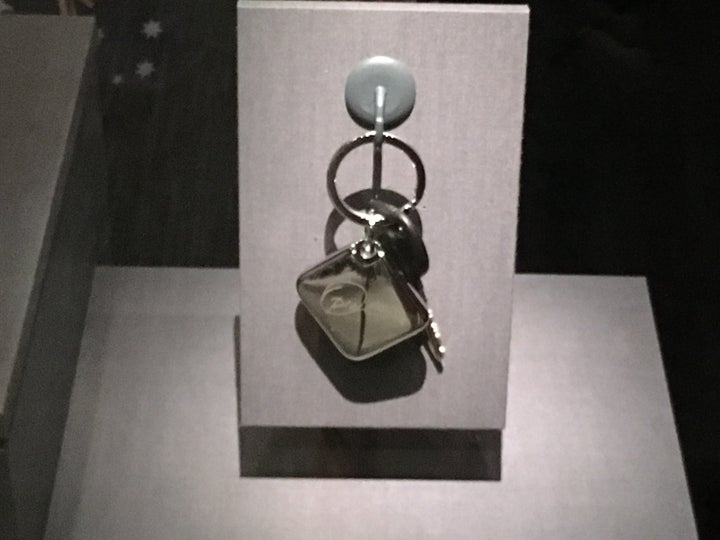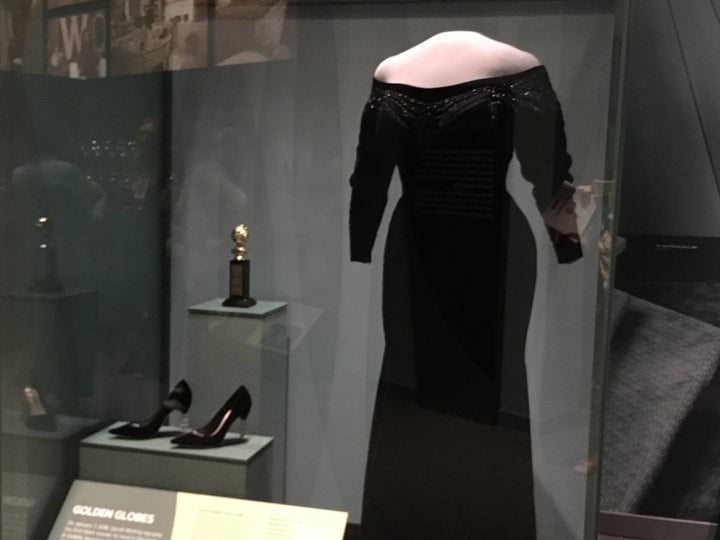WASHINGTON — It’s easy to get engrossed in and even overwhelmed by “Watching Oprah,” an exhaustive examination of Oprah Winfrey’s legacy as a media mogul and cultural icon.
Opening Friday at the Smithsonian National Museum of African American History and Culture, the exhibition of over 240 objects and artifacts in five sections is the first comprehensive look at Winfrey’s life and career, according to the museum. A 2016 podcast from WBEZ Chicago, “Making Oprah,” covered similar territory in audio form, tracing her rise as daytime television pioneer through interviews with Winfrey and longtime producers and staffers on her show.
The exhibition builds on existing items related to Winfrey that have been on display since the museum’s opening in September 2016. But curators knew for several years that they wanted “a more complicated portrait,” according to museum director Lonnie Bunch III.
He stressed that, though Winfrey’s staff helped curators gather objects and fact-check information, the content was created independently of the mogul, who is a major champion of and donor to the museum.
“This was not a show done for Oprah or done by Oprah,” Bunch said at a preview of the exhibition earlier this week.
To some degree, it succeeds in bringing nuance to Winfrey’s persona. It does not just applaud her triumphs but points out contradictions in her work and urges viewers to grapple with the issues that she has confronted throughout her career, including race, gender, power, celebrity and body image.
“These shows were an amazing snapshot of the issues that America faced -- or in some cases, refused to face.”
- Lonnie Bunch III, director of the National Museum of African American History and Culture
For example, in a section devoted to Winfrey’s fashion and style, the exhibition notes that while she used her role as a public figure to emphatically “challenge perceptions of beauty and encourage women of all body types to accept and love themselves,” she also struggled with her own body image and whether to conform to conventional beauty standards.
Her show aimed to empower women, but its episodes on makeovers “reinforced ideas that improving one’s style and physical appearance would also improve one’s life,” according to the exhibit.
But most of the experience seeks to inform rather than challenge, presenting Winfrey through the lens of history and pop culture. The first part of the exhibition develops the backdrop against which she came of age, “recognizing that Oprah Winfrey does not exist in a vacuum,” as exhibit curator Rhea Combs said. Winfrey’s early life coincided with both the civil rights movement and the feminist movement, as well as changes in television and media.

The heart of the exhibition — and its greatest asset — is its meticulous deconstruction of Winfrey’s pioneering talk show and cultural legacy, demonstrating how the show tackled major social issues and shaped viewers’ consumer and literary tastes. In other words, watching Oprah was like watching America.
“These shows were an amazing snapshot of the issues that America faced — or in some cases, refused to face,” Bunch said.
The largest portion of the exhibition space is about the making of her talk show, complete with a re-creation of the set, “an idealized extension of television viewers’ living rooms,” according to the exhibition. Visitors can also see chairs that were originally used for the studio audience, with tissue boxes tucked underneath the folding seats for the show’s emotional moments.
There’s a whole display about her “Favorite Things” car giveaway, forever immortalized in pop culture memes. For visitors interested in the nuts and bolts of TV production, there are all kinds of artifacts on the process of creating the show: scripts, staff emails about episode ideas, her wardrobe and even audience seating arrangements.

Bunch said the choice of Winfrey as a subject reflects how the museum is finding “concrete examples where we could explore the impact of culture,” in addition to its focus on history.
In explaining her appeal and authority, he said: “She knows her audience and cares about her audience. There’s a sense that she is never going through the motions.”
In some ways, that aptly describes the exhibition. It knows its audience wants to celebrate Winfrey’s legacy as a trailblazing black woman, and its curators have excavated myriad markers of her cultural imprint from sometimes unexpected places. One such item: a syllabus from a history professor in 2001 who taught a course on “Oprah Winfrey, The Tycoon,” the first known college curriculum built around her, according to the exhibit.

And reflecting how subjects in a museum about modern culture are not always fixed and can continue to evolve, there are items from events as recent as her appearance at the Golden Globe Awards this January.
In probing her vast cultural legacy, the exhibition asks viewers to consider what Winfrey means to them, and the breadth of the objects suggests that, like her ever-evolving career, that meaning will continue to change.
“Watching Oprah” opens Friday at the Smithsonian National Museum of African American History and Culture in Washington and will be on view until June 2019.
